Introduction
Recognizing the early signs of autism in babies and toddlers is crucial for timely intervention and support. From limited eye contact to delayed babbling, these early indicators can guide parents and caregivers towards seeking professional evaluations and tailored therapies. As children grow, understanding and addressing autism symptoms in primary school age children becomes essential to their social and emotional development.
This article delves into the common characteristics of autism, highlighting the importance of social interaction and communication signs, as well as the challenges posed by repetitive behaviors and sensory processing issues. It also explores the signs of high-functioning autism and underscores the significance of early assessment and diagnosis. By offering practical steps for parents who notice autism symptoms, this guide aims to empower families with the knowledge and resources needed to support their children's well-being and development.
Early Signs of Autism in Babies and Toddlers
- Limited eye contact or difficulty maintaining gaze is often one of the early signs of a developmental disorder. Research has indicated that eye-tracking methods may assist primary care providers in identifying the condition earlier and with greater precision.
- A lack of response to name being called can be indicative of a developmental disorder, as it reflects challenges in social interaction. Almost 3% of all youth in the United States are identified with the condition, according to the Centers for Disease Control and Prevention.
- Delayed babbling or speech development is another key symptom. Research consistently shows that the earlier behavioral therapy begins, the better the outcome for the young individual.
- Limited use of gestures, such as pointing or waving, can also be a sign. Early intervention is crucial, as highlighted by the Autism Community in Action (TACA), which emphasizes the importance of an accurate diagnosis.
- Uncommon responses to sensory perceptions, like sounds, textures, or lights, are frequent among individuals on the spectrum. This has been supported by findings that babies as young as four months show signs of self-awareness, underscoring the importance of early detection.
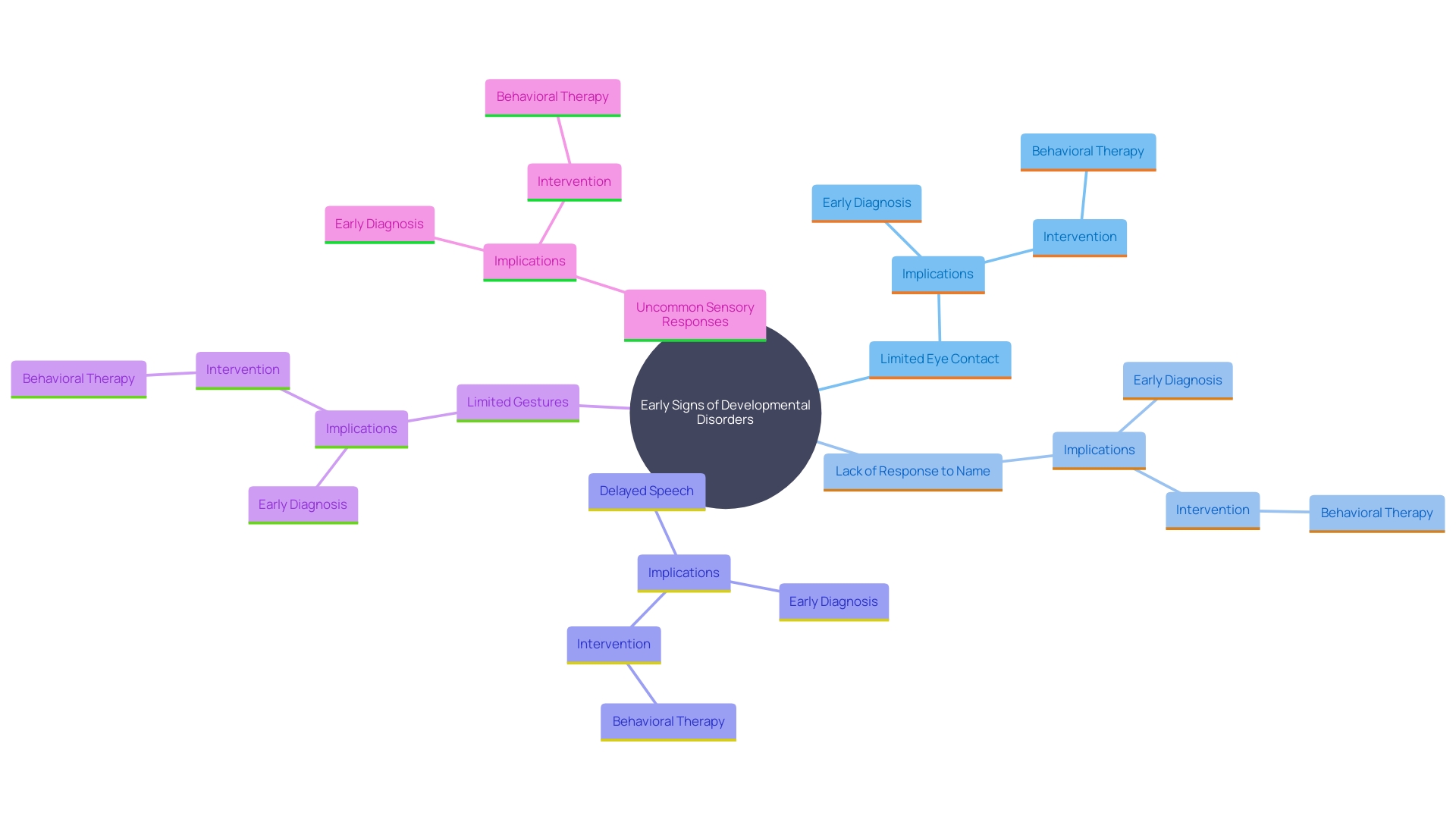
Autism Symptoms in Primary School Age Children
- Difficulty forming friendships or participating in group activities can be a common challenge for individuals on the autism spectrum. These children frequently find it difficult to comprehend cues and norms of interaction, making it harder for them to connect with peers and navigate community environments.
- Comprehending interpersonal cues, such as distinguishing authentic from staged smiles, is frequently a major obstacle. This can lead to misunderstandings and difficulties in interpersonal interactions, further isolating them from their peers.
- A preference for solitary play or individual activities is frequently observed, as social interactions can be overwhelming or confusing.
- Emotional responses can be inconsistent, with some young individuals experiencing difficulty managing their emotions in various situations. This can be particularly challenging during transitions or changes in routine, which can trigger stress or anxiety.
- Engaged and well-supported participation in daily activities is crucial for mental health. Ensuring that children with autism have the resources and support they need to thrive in school, home, and leisure activities can help reduce chronic stress and promote a healthy development.
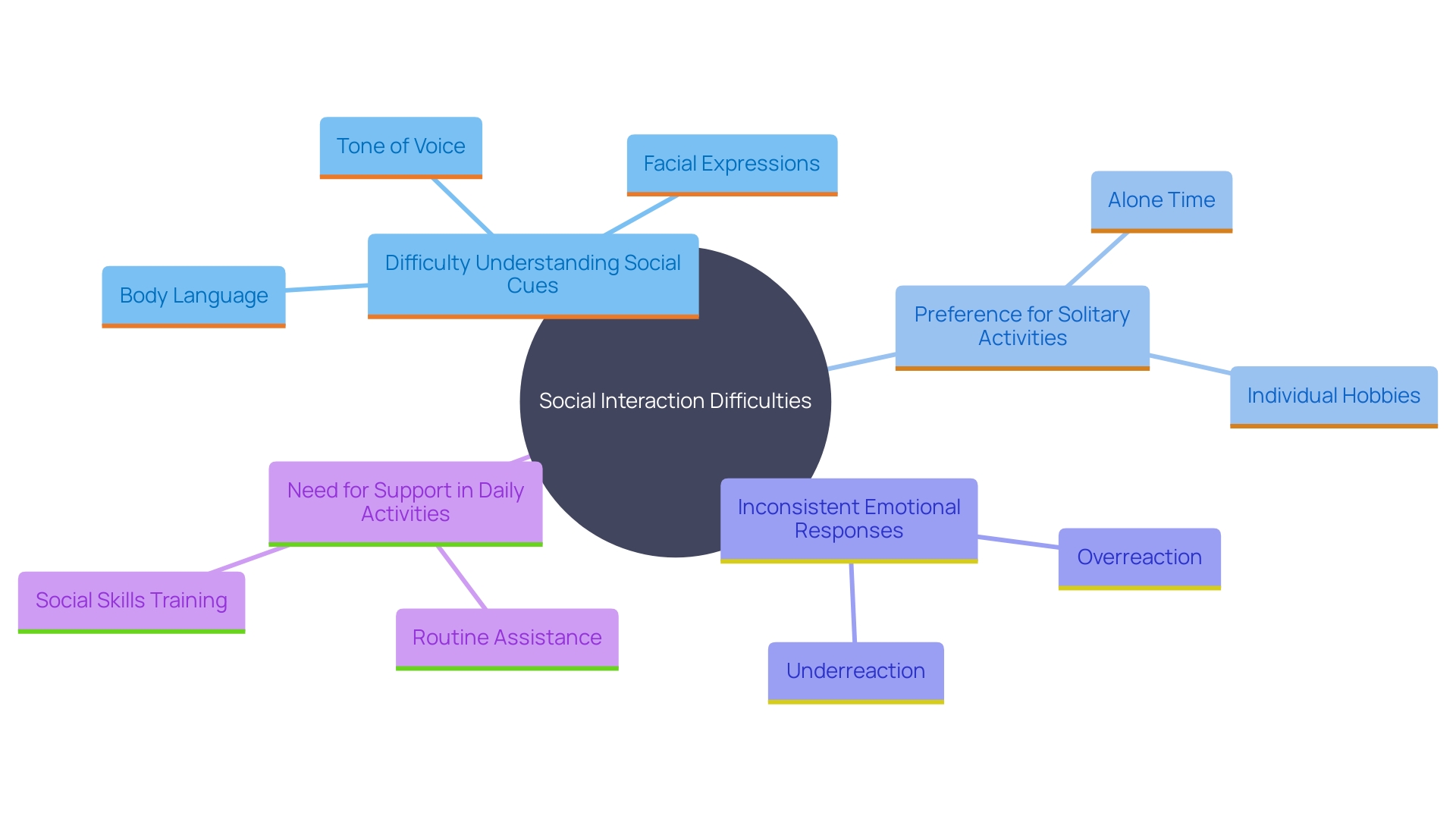
Common Characteristics of Autism
- Intense focus on specific interests or topics, frequently to the exclusion of other activities and conversations.
- Repetitive movements or behaviors, such as hand-flapping or rocking.
- Difficulty with changes in routine or environment, which can lead to distress or anxiety.
- Sensory sensitivities, including aversions to loud noises, bright lights, or certain textures.
- Difficulties in comprehending and conveying feelings, which can influence interactions and relationships.
Social Interaction Signs
Autistic individuals often face significant challenges in interpersonal communication. Around one-third of autistic children and adults struggle with effective verbal communication, with some not speaking at all, others using only a few words or phrases, and some speaking in a very limited way. This can result in difficulty initiating or maintaining conversations and a limited understanding of others' feelings or perspectives.
These communication difficulties can hinder the sharing of interests or achievements with others and can lead to a lack of interest in peer relationships or group activities. Additionally, interpreting nonverbal communication, such as facial expressions or body language, can be particularly challenging for many on the spectrum.
Research indicates that interpersonal relationships play a crucial role in mental health and development. However, autistic teenagers frequently encounter a convergence between mood disorders and impaired communication skills, making it more challenging to differentiate between the two. This can further exacerbate their interpersonal communication challenges.
Efforts to enhance interaction among autistic individuals often focus on early intervention, targeting preverbal forms of communication, such as joint attention, which is crucial for later language competency. Research has indicated that participating in joint attention can prepare the ground for verbal communication, assisting in tackling the main difficulties of this condition and establishing a basis for social learning and interaction.
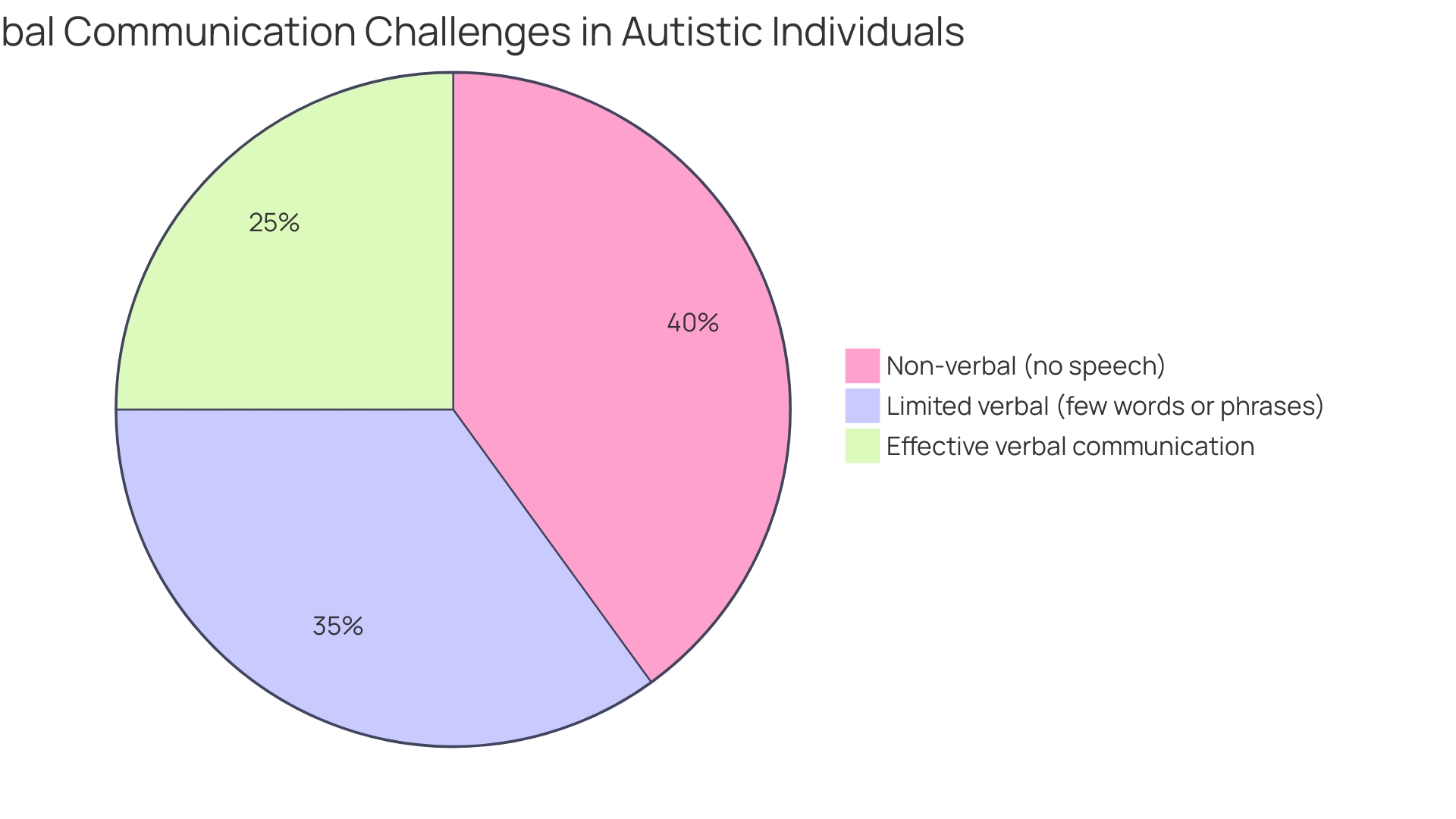
Communication Signs
- Delayed language development or absence of spoken language: Many children with autism experience delays in learning to speak or may not develop spoken language at all. This can make it challenging for them to express their needs and feelings effectively.
- Use of scripted or repetitive phrases in conversation: Autistic individuals frequently rely on memorized phrases or scripts during conversations. This repetition can be a coping mechanism to navigate interpersonal interactions and ensure they are communicating clearly.
- Difficulty understanding jokes, idioms, or sarcasm: Abstract language, including humor and figurative speech, is often challenging for autistic individuals. They tend to interpret language literally, which can lead to misunderstandings in social contexts.
- Challenges in taking turns during conversations: Engaging in back-and-forth dialogue can be particularly difficult. Autistic individuals might either dominate the conversation or struggle to contribute, affecting the flow of communication.
- Limited use of gestures or facial expressions in communication: Non-verbal cues such as gestures and facial expressions are often less utilized by autistic individuals, which can make their communication seem less expressive. This difference can sometimes be misinterpreted as a lack of interest or engagement.
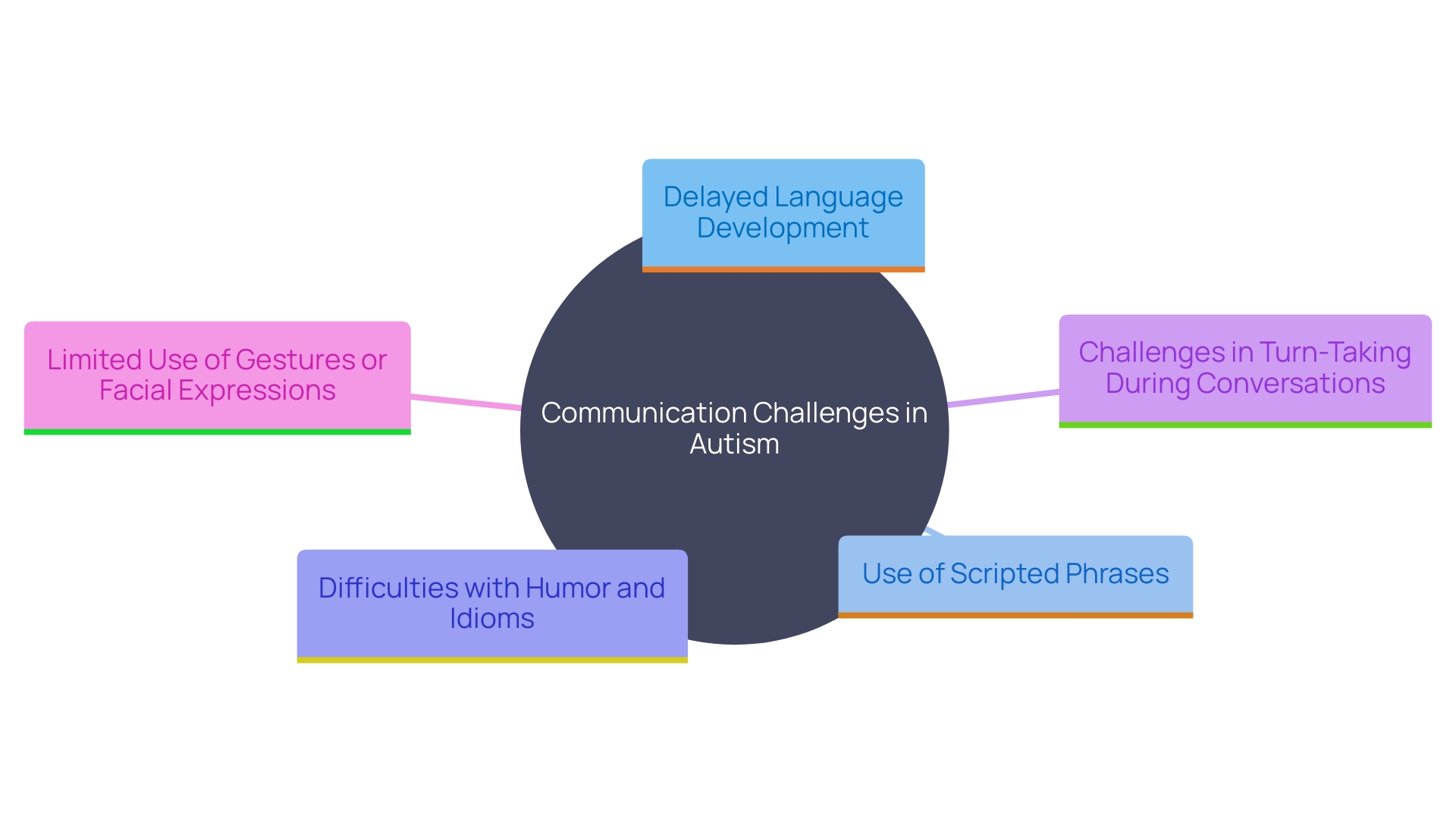
Repetitive Behaviors and Sensory Processing
-
Engaging in repetitive movements, such as rocking or spinning, is a common behavior among autistic youth and young individuals. These repetitive actions help them manage their sensory experiences and can be a coping mechanism for dealing with overwhelming stimuli.
-
Insistence on sameness or routine, becoming distressed with changes, is another hallmark of autism. Many autistic individuals rely on predictable routines to navigate their daily lives. Changes in these routines can cause significant anxiety and distress.
-
Strong reactions to sensory input, such as touch or noise, are frequently observed. Autistic children and young people frequently have heightened sensitivities to sensory stimuli, which can make everyday environments challenging. For instance, loud noises or certain textures might trigger intense reactions.
-
Fascination with specific objects or patterns is another characteristic. This intense focus can be a way for them to find comfort and predictability in a world that frequently feels chaotic.
-
Difficulty filtering out background stimuli in busy environments can make interactions and everyday tasks overwhelming. This challenge is due to their brain's inability to easily filter and prioritize sensory information, making it hard to focus on a single task or conversation.
High-Functioning Autism Signs
- Exceptional verbal skills paired with challenges in social interactions
- Strengths in specific subjects while struggling with everyday tasks
- Intense focus on particular interests, often to the exclusion of others
- Difficulty grasping social nuances despite high intelligence
- May experience anxiety in social settings or unfamiliar environments
Importance of Early Assessment and Diagnosis
-
Early identification of autism can lead to timely interventions and support. This proactive approach is crucial, as it allows parents and caregivers to seek the necessary resources and professional guidance early on, potentially improving long-term outcomes for their offspring. According to the US Preventive Services Task Force (USPSTF), early detection and tailored preventive care services can significantly influence a young person's developmental trajectory.
-
Understanding individual strengths and challenges aids in developing personalized strategies. Acknowledging both the unmet needs and the distinct strengths of young individuals with developmental differences is crucial. As Dr. David Offord, a renowned psychiatrist for young people, emphasized, providing equitable support ensures that all youngsters, including those with disabilities, can participate meaningfully in their daily lives.
-
Access to resources and support services can greatly enhance outcomes for individuals on the autism spectrum. The Interagency Autism Coordinating Committee (IACC) underscores the importance of a coordinated approach to autism research and services. By enhancing communication and teamwork among different parties, including parents, educators, and healthcare providers, youngsters can receive thorough and effective support.
-
Parents can gain clarity on their offspring's specific needs and learn how to advocate effectively for them. This involves understanding the evidence and tailoring decision-making to each young person's situation, as highlighted by the USPSTF. Equipped with information and tools, parents can more effectively manage the difficulties of raising a young person with developmental differences.
-
Encouraging a collaborative approach with educators and therapists is vital. Involvement and strong backing of young individuals with autism in school and community activities is a crucial factor for their mental health and overall well-being. Joint efforts guarantee that young individuals receive consistent assistance in all aspects of their lives, promoting a more inclusive and supportive atmosphere.
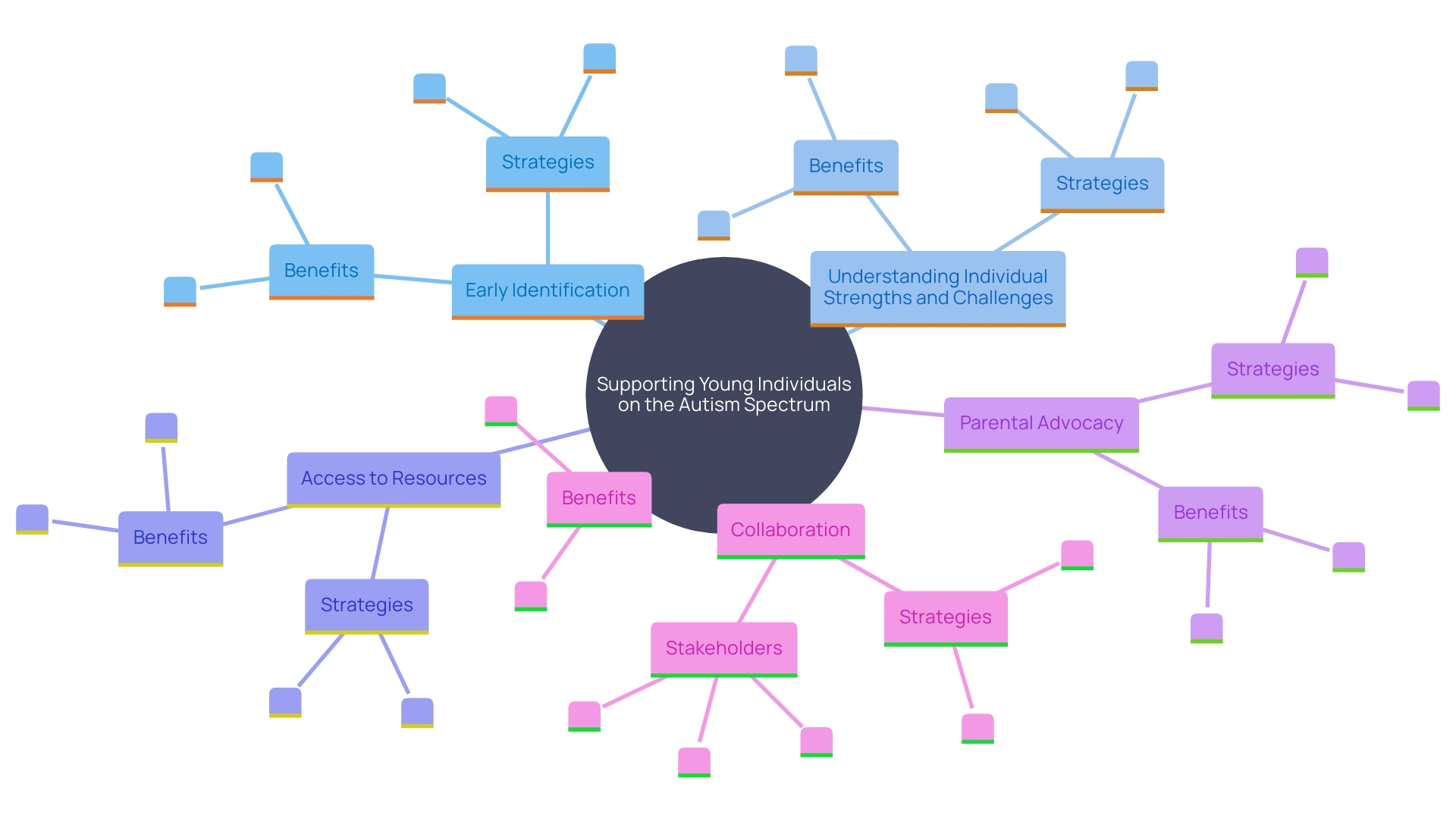
Steps to Take if You Notice Autism Symptoms
- Maintain a comprehensive log of observed behaviors and concerns. This can help in identifying patterns and provide valuable information for professional evaluations.
- Schedule an appointment with a pediatrician or child psychologist to discuss your observations and get a thorough evaluation. Early intervention is crucial for better outcomes.
- Contact nearby organizations focused on developmental disorders for resources and assistance. These organizations often provide valuable information, support groups, and access to interventions.
- Connect with other parents who have kids with autism. Sharing experiences and advice can be incredibly supportive and provide practical insights.
- Stay updated on the latest interventions and educational options available. Continuous learning about new treatments, therapies, and educational strategies can make a significant difference in your child's development. As one expert noted, 'There are always new findings, treatments, medications, and therapeutic approaches. It’s important to stay current.'

Conclusion
Recognizing the early signs of autism in babies and toddlers is essential for ensuring timely intervention and support. Key indicators, such as limited eye contact, delayed speech, and unusual responses to sensory experiences, can guide parents in seeking professional evaluations. Understanding these signs not only aids in early diagnosis but also empowers families to take proactive steps in supporting their children's development.
As children enter primary school, the importance of addressing autism symptoms continues to grow. Challenges in social interactions, such as difficulty forming friendships and understanding social cues, can significantly impact their emotional well-being. Providing the necessary resources and support can help children navigate these challenges, fostering healthier social connections and reducing stress.
The characteristics of autism, including repetitive behaviors and sensory sensitivities, highlight the need for tailored interventions. Recognizing the unique strengths and challenges of each child allows for personalized strategies that can enhance their developmental trajectory. Early assessment and diagnosis are crucial, as they open the door to targeted support services and effective advocacy.
For parents noticing autism symptoms, taking actionable steps is vital. Keeping a detailed log of behaviors, consulting with professionals, and connecting with local organizations can create a strong support network. By staying informed and engaged, parents can empower themselves and their children, ensuring they receive the comprehensive care and understanding essential for their growth and well-being.




